#torin thatcher
Explore tagged Tumblr posts
Text
















The 7th Voyage of Sinbad - Promotional stills (1958)
#the 7th voyage of sinbad#ray harryhausen#stop motion animation#50s fantasy movies#kerwin mathews#kathryn grant#torin thatcher#nathan h. juran#promotional stills#dynamation#cyclops#skeleton#roc#dragon#50s movies#1950s#1958
329 notes
·
View notes
Text

In the 1956 film "Helen of Troy", Ulysses was played by the fifty-one-year-old Torin Thatcher. Despite being older than most people would typically think of Odysseus/Ulysses, he gives one of the best performances in the film, even if the Achaeans are villainized as pirates looking to loot Troy, and you can believe you are looking at the myth come to life.
18 notes
·
View notes
Text
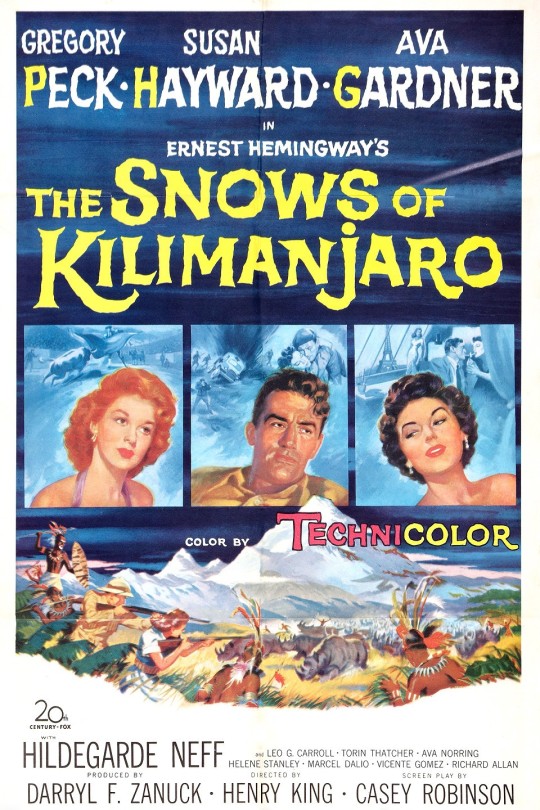
#The Snows of Kilimanjaro#Gregory Peck#Susan Hayward#Ava Gardner#Leo G. Carroll#Torin Thatcher#Ava Norring#Helene Stanley#Marcel Dalio#Vicente Gómez#Richard Allan#Henry King#1952
4 notes
·
View notes
Text
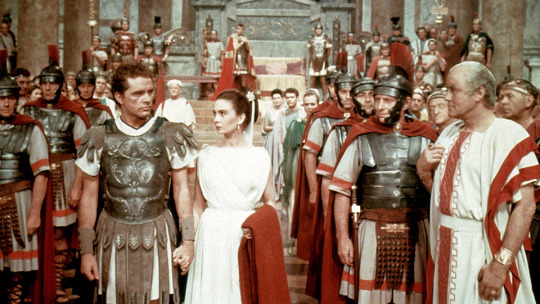
The Robe (1953)
Henry Koster’s The Robe, distributed by 20th Century Fox, appeared near the beginning of an era where religious epics and sword-and-sandal films became massive box office draws worldwide. Cecil B. DeMille’s Samson and Delilah (1949) and Mervyn LeRoy’s Quo Vadis (1951) had already laid the foundation on which Koster’s film, adapting Lloyd C. Douglas’ novel of the same name, would find its success. Despite The Robe being highly influential in Hollywood and becoming the highest-grossing film of 1953, the likes of DeMille’s The Ten Commandments (1956) and William Wyler’s Ben-Hur (1959) overtook it artistically and financially – no shame there, as those are two far superior films.
So what is The Robe’s claim to movie history beyond its initial theatrical earnings? When The Robe first came to theaters, 20th Century Fox advertised it as the first film ever made in CinemaScope. Created by Fox’s president, Spyros P. Skouras, CinemaScope was a format in which a widescreen camera lens contracted its widescreen shots onto regular 35mm film and, during theatrical projection, another lens would de-contract the image from the 35mm film in order to project a widescreen format. Theaters would only need to make minor, inexpensive modifications to their projectors in order to show a film in true CinemaScope, a 2:55:1 widescreen aspect ratio. Almost all other films were shot in the Academy ratio at the time (1.37:1, close to the 4:3 ratio – think: black bars on the left- and right-hand sides of a widescreen monitor – seen on many older standard computer monitors and televisions). With increasing competition from television, Fox executives believed CinemaScope could be a way to lure audiences back into theaters. Despite this overreaction from Fox’s executives (as well as the other major Hollywood studios), the legacy of CinemaScope’s innovation is still apparent today. Seven decades later, widescreen formats, not the Academy ratio, are the default in film and television.
Walking through the markets of Rome, returning Roman Empire tribune Marcellus Gallio (Richard Burton) reunites with his childhood sweetheart, Diana (Jean Simmons), who is now promised to Marcellus’ rival, Caligula (an always-sneering Jay Robison). Not long after, Marcellus – out of pettiness rather than financial sense – outbids Caligula for the Greek slave, Demetrius (Victor Mature). Marcellus immediately frees Demetrius, but Demetrius thinks of himself as honor-bound to stay by Marcellus. Elsewhere, an incensed Caligula reassigns Marcellus to Palestine – which, to the film’s Roman characters, might as well be the armpit of the Roman Empire. Marcellus and Demetrius go to Jerusalem, where they witness a man named Jesus enter the city, heralded by crowds of Jews greeting him with palms. Several days later, Judean Governor Pontius Pilate (Richard Boone) orders Marcellus to crucify Jesus on Calvary. Marcellus executes the order but, during and after the crucifixion, witnesses and experiences supernatural events. Demetrius, who has become a follower of Jesus during that week, obeys Marcellus when he asks him to fetch Jesus’ robe. The moment Marcellus dons the robe, he suffers something like a seizure. He falls out with Demetrius, and spends the rest of the film reckoning with his conscience over his role in Jesus’ crucifixion.
The film also stars Michael Rennie as Peter, Dean Jagger as Justus, Torin Thatcher as Senator Gallio, and Ernest Thesiger as Emperor Tiberius. Michael Ansara and Donald C. Klune are both uncredited as Judas Iscariot and Jesus, respectively.
The Robe has the misfortune of peaking in the first half. The adapted screenplay from Gina Kaus (1949’s The Red Danube), Albert Maltz (one of the blacklisted Hollywood Ten; 1950’s Broken Arrow), and Philip Dunne (1941’s How Green Was My Valley) is at its most interesting whenever Marcellus and Demetrius find themselves at odds with the other. In the scenes they share together, that happens often. But when Demetrius disappears after their disagreement over Jesus’ robe midway through, the film begins to sag with no foil for Burton to play off of.
For the entirety of this film, Richard Burton’s acting is overwrought. Burton, who had just arrived in Hollywood the year before to star in My Cousin Rachel (1952), is leaning too deeply into his theatrical roots here. His grandiose exclamations, stiff facial acting, and inconsistent line delivery result in a performance that is easily the weakest part of this film (Jean Simmons is also guilty, to a far lesser degree, of these same flaws in her performance). The Robe requires Burton’s Marcellus to undergo a spiritual conversion – becoming an adherent of Jesus despite following orders to crucify him, a developmental arc more dramatic than any other character’s in this film. Burton’s inability to convincingly sell this conversion (the stoic masculine tension, which some will interpret as coded homosexuality, between Burton’s Marcellus and Mature’s Demetrius does not help) weakens the film’s spiritual power.
Instead, it is Mature who is The Robe’s reliable scene-stealer. Mature, at one time likened to a “miniature Johnny Weissmuller”, has the classical Greek physique that, frankly, Burton does not. And in contrast to Burton at this time in their careers, Mature was more capable of a nuanced performance, as evidenced in his roles as Doc Holliday in My Darling Clementine (1946) and Nick Bianco in Kiss of Death (1947). As Demetrius, his soul hardened through his enslavement, there remains hope for a life free from the yoke of the Roman Empire and its callous slave masters. One sees it in his face during Holy Week, culminating with seeing Jesus dying on the cross. His faith is there, too, during a torture scene upon his return to Rome and an encounter with Peter. Amid miracles and cruelties, Mature’s Demetrius is simply the most compelling character of The Robe and the viewer – through Mature’s performance, especially in contrast to those of Jean Simmons and Richard Burton’s – can discern his genuine turn of faith. The Robe’s failure to showcase this inner awakening more believably is the fault of its two central actors and its screenplay; Mature’s performance and Demetrius’ characterization are all that saves the narrative.
One aspect of Christianity that The Robe captures confusingly (and oxymoronically) is the insignificance of Judea and the prominence of early Christianity in Rome in the time immediately following Jesus’ crucifixion. Oftentimes in Biblical epics, Judea is a centerpiece of the Roman Empire when, in truth (and in The Robe), it was a relative backwater. By Caligula’s reign between 37 and 41 CE, Christianity almost certainly would not have had a substantial presence in Rome at that time. So while Caligula would probably see Christianity as a threat, the film’s decision to treat the early Christians as a clear and present danger to his rule and the Roman state religion is the film’s glaring historical inaccuracy. The Robe – the book and the film – muddies the timeline from Jesus’ crucifixion to the film’s final scene in Caligula’s court. The relative suddenness of the Roman Empire seeing the early Christians as a very minor cult into becoming an Empire-wide menace is difficult to reconcile.
With few other post-silent film era Biblical epics as a guide, The Robe helps set the aesthetic of its fellow Biblical epics and sword-and-sandals movies going forward through its costumes and production design. The work of costume designers Charles LeMaire (1950’s All About Eve, 1956’s Carousel) and Emile Santiago (1952’s Androcles and the Lion, 1958’s The Big Country) is resplendent, regardless of either the Roman or Judean setting. Art directors Lyle R. Wheeler (1939’s Gone with the Wind, 1956’s The King and I) and George Davis (All About Eve, 1963’s How the West Was Won) and set decorators Walter M. Scott (All About Eve, 1965’s The Sound of Music) and Paul S. Fox (The King and I, 1963’s Cleopatra) all make full use of the CinemaScope format and color to enliven the scenery – a sumptuous visual treat for the viewer, and, to reiterate, setting a standard that the crew of The Ten Commandments and Ben-Hur both would study and surpass.
Of all of 20th Century Fox contracted stalwarts behind the camera, composer Alfred Newman was the studio’s most important figure. If Fox’s executives needed a composer to craft a score for what they would consider would be their prestige motion picture of the year, Newman – who composed the original 20th Century Fox fanfare and its CinemaScope extension (the extension, which is now inextricable from the fanfare, was first introduced in 1954’s River of No Return) – was almost always their first choice.
youtube
In one of Newman’s finest scores of his career, it is his choral compositions, with incredible help from his longtime choral supervisor Ken Darby, that form the score’s emotive spine. Jesus’ motif, shared between wordless choir and strings, appears almost immediately, in the opening seconds of the “Prelude”. During the many invocations of a Messiah before Jesus’ first physical appearance in The Robe, his motif shifts, changes form, and modulates – imparting not spiritual comfort or devotion, but a mysteriousness and otherworldliness. When Jesus (whose face we never see) first appears in Jerusalem on Palm Sunday, the cue “Passover/Palm Sunday” represents one of the rare juxtapositions of the brass-heavy martial music representing the Roman presence in Judea and Jesus himself. The modulation to a major key at 1:22 in this cue, with festive percussion, also includes one of the only instances of celebratory choral music in the score. Jesus’ motif in “Passover/Palm Sunday”, appears at 2:26 – cementing his (and Christianity’s) association with the cue, and appearing as the only instance in which one might consider this motif triumphant.
Choruses, which Western viewers so often associate in religious movies as angelic musical devices, become mournful in “The Crucifixion” – arguably the standout cue of Newman’s score. Even though one might be well aware of Jesus’ death and can anticipate a turn in the music (starting moments earlier in “The Carriage of the Cross”), it is startling to hear Newman’s composition change so rapidly. But it is in these several minutes depicting Jesus’ final moments that Newman, with modifications to his harmonies and orchestration, transforms Jesus’ motif to evoke its tragic dimensions. It is magnificent scoring from Newman, and this is not even mentioning his wonderful demarcation of Roman and Judean identities through his score.
In a film about faith – how it comforts, destroys, heals, and vexes – one wishes that the characterization of The Robe’s supposed lead characters in Marcellus and Diana could feel more plausible. The film’s final scene, possibly allegorizing of screenwriter Albert Maltz’s travails as a blacklisted figure in Hollywood, is decently powerful, but it needs far more storytelling support from numerous scenes preceding it.
As it is, the film’s expressive power lies within Demetrius and Victor Mature’s performance. So how fortunate that, because Fox also wanted to make a sequel to The Robe even before it finished production, Mature also signed a contract to appear in a sequel. Nine months after The Robe made its theatrical debut, Victor Mature starred in Demetrius and the Gladiators, directed by Delmer Daves and also seeing Michael Rennie and Jay Robinson reprise their roles as Peter and Caligula, respectively. Though it did not top the box office for that year like The Robe did, Demetrius and the Gladiators was a financial boon for Fox.
With Hollywood’s major studios always ready to respond to the box office successes of their rivals, The Robe helped make possible the decade of Biblical and sword-and-sandals epics to come – and the required viewings for many a Sunday School student in the years hence. These films were Studio System Hollywood in full maximalism, adopting human and tactile scales seldom seen today.
Yet outside of churchgoers, The Robe – for its CinemaScope and genre-specific innovations – has seen its standing slip gradually over the years, no thanks to the reputations of better movies of this tradition and, regrettably, decisions to keep 20th Century Fox’s valuable past under lock and key. 20th Century Fox’s refusal to distribute their classic films more often and more widely – before and after the studio’s 2019 takeover by the Walt Disney Company (and post-takeover, I believe the situation is now worse) – is resulting in films like The Robe slip through the proverbial cracks of film history, sights unseen for younger film buffs. That is unfortunate, especially as The Robe, almost incidentally (and no matter my aforementioned criticisms of the work itself), continues to quietly wield, by virtue of being the first CinemaScope film, a remarkable influence over cinema worldwide.
My rating: 6/10
^ Based on my personal imdb rating. My interpretation of that ratings system can be found in the “Ratings system” page on my blog. Half-points are always rounded down.
For more of my reviews tagged “My Movie Odyssey”, check out the tag of the same name on my blog.
#The Robe#Henry Koster#Richard Burton#Jean Simmons#Victor Mature#Michael Rennie#Jay Robinson#Dean Jagger#Torin Thatcher#Richard Boone#Michael Ansara#Leon Shamroy#Alfred Newman#Ken Darby#Charles LeMaire#Emile Santiago#Lyle R. Wheeler#George Davis#TCM#My Movie Odyssey
4 notes
·
View notes
Text


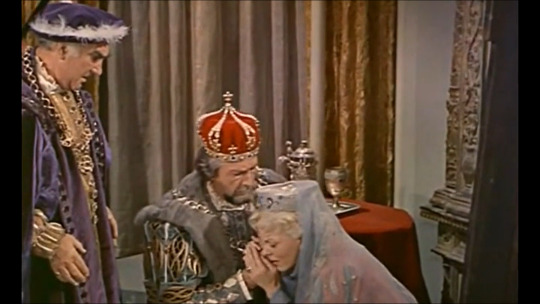
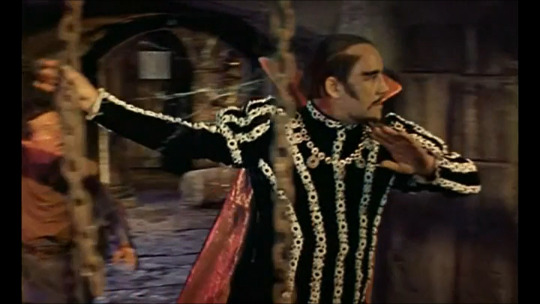
youtube
Jack the Giant Killer (1962)
My rating: 6/10
Every time I watch this, I almost immediately forget about the squid lizard, which on one hand is a shame because it's very good, but on the other hand this way it's a delightful surprise each time
#Jack the Giant Killer#Nathan Juran#Orville H. Hampton#Kerwin Mathews#Judi Meredith#Torin Thatcher#Youtube
2 notes
·
View notes
Text
The 7th Voyage of Sinbad (1958)
While sailing with Princess Parisa to Baghdad to their wedding, Sinbad finds the Colossa Island and anchors his vessel to get supplies for the starving crew. Sinbad and his men help the magician Sokurah to escape from a Cyclops that attacks them, and Sokurah uses a magic lamp with a boy jinni to help them; however, their boat sinks and he loses the lamp. Sokurah offers a small fortune to Sinbad…
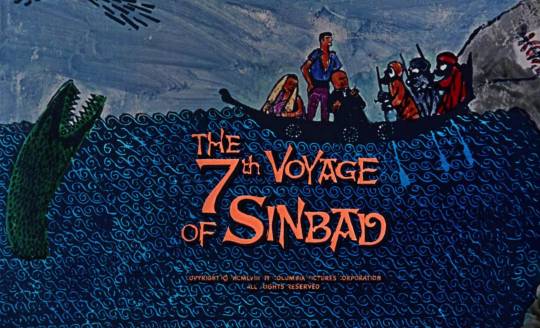
View On WordPress
0 notes
Text
Character Name Ideas (Male)
So I've been browsing through BehindTheName (great resource!) recently and have compiled several name lists. Here are some names, A-Z, that I like. NOTE: If you want to use any of these please verify sources, meanings etc, I just used BehindTheName to browse and find all of these. Under the cut:
A: Austin, Aiden, Adam, Alex, Angus, Anthony, Archie, Argo, Ari, Aric, Arno, Atlas, August, Aurelius, Alexei, Archer, Angelo, Adric, Acarius, Achilou, Alphard, Amelian, Archander B: Bodhi, Bastian, Baz, Beau, Beck, Buck, Basil, Benny, Bentley, Blake, Bowie, Brad, Brady, Brody, Brennan, Brent, Brett, Brycen C: Cab, Cal, Caden, Cáel, Caelan, Caleb, Cameron, Chase, Carlos, Cooper, Carter, Cas, Cash, Cassian, Castiel, Cedric, Cenric, Chance, Chandler, Chaz, Chad, Chester, Chet, Chip, Christian, Cillian, Claude, Cicero, Clint, Cody, Cory, Coy, Cole, Colt, Colton, Colin, Colorado, Colum, Conan, Conrad, Conway, Connor, Cornelius, Creed, Cyneric, Cynric, Cyrano, Cyril, Cyrus, Crestian, Ceric D: Dallas, Damien, Daniel, Darach, Dash, Dax, Dayton, Denver, Derek, Des, Desmond, Devin, Dewey, Dexter, Dietrich, Dion, Dmitri, Dominic, Dorian, Douglas, Draco, Drake, Drew, Dudley, Dustin, Dusty, Dylan, Danièu E: Eadric, Evan, Ethan, Easton, Eddie, Eddy, Einar, Eli, Eilas, Eiljah, Elliott, Elton, Emanuel, Emile, Emmett, Enzo, Erik, Evander, Everett, Ezio F: Faolán, Faron, Ferlin, Felix, Fenrir, Fergus, Finley, Finlay, Finn, Finnian, Finnegan, Flint, Flip, Flynn, Florian, Forrest, Fritz G: Gage, Gabe, Grady, Grant, Gray, Grayson, Gunnar, Gunther, Galahad H: Hale, Harley, Harper, Harvey, Harry, Huey, Hugh, Hunter, Huxley I: Ian, Ianto, Ike, Inigo, Isaac, Isaias, Ivan, Ísak J: Jack, Jacob, Jake, Jason, Jasper, Jax, Jay, Jensen, Jed, Jeremy, Jeremiah, Jesse, Jett, Jimmie, Jonas, Jonas, Jonathan, Jordan, Josh, Julien, Jovian, Jun, Justin, Joseph, Joni, K: Kaden, Kai, Kale, Kane, Kaz, Keane, Keaton, Keith, Kenji, Kenneth, Kent, Kevin, Kieran, Kip, Knox, Kris, Kristian, Kyle, Kay, Kristján, Kristófer L: Lamont, Lance, Landon, Lane, Lars, László, Laurent, Layton, Leander, Leif, Leo, Leonidas, Leopold, Levi, Lewis, Louie, Liam, Liberty, Lincoln, Linc, Linus, Lionel, Logan, Loki, Lucas, Lucian, Lucio, Lucky, Luke, Luther, Lyall, Lycus, Lykos, Lyle, Lyndon, Llewellyn, Landri, Laurian, Lionç M: Major, Manny, Manuel, Marcus, Mason, Matt, Matthew, Matthias, Maverick, Maxim, Memphis, Midas, Mikko, Miles, Mitch, Mordecai, Mordred, Morgan, Macari, Maïus, Maxenci, Micolau, Miro N: Nate, Nathan, Nathaniel, Niall, Nico, Niels, Nik, Noah, Nolan, Niilo, Nikander, Novak, O: Oakley, Octavian, Odin, Orlando, Orrick, Ǫrvar, Othello, Otis, Otto, Ovid, Owain, Owen, Øyvind, Ozzie, Ollie, Oliver, Onni P: Paisley, Palmer, Percival, Percy, Perry, Peyton, Phelan, Phineas, Phoenix, Piers, Pierce, Porter, Presley, Preston, Pacian Q: Quinn, Quincy, Quintin R: Ragnar, Raiden, Ren, Rain, Rainier, Ramos, Ramsey, Ransom, Raul, Ray, Roy, Reagan, Redd, Reese, Rhys, Rhett, Reginald, Remiel, Remy, Ridge, Ridley, Ripley, Rigby, Riggs, Riley, River, Robert, Rocky, Rokas, Roman, Ronan, Ronin, Romeo, Rory, Ross, Ruairí, Rufus, Rusty, Ryder, Ryker, Rylan, Riku, Roni S: Sammie, Sammy, Samuel, Samson, Sanford, Sawyer, Scout, Seán, Seth, Sebastian, Seymour, Shane, Shaun, Shawn, Sheldon, Shiloh, Shun, Sid, Sidney, Silas, Skip, Skipper, Skyler, Slade, Spencer, Spike, Stan, Stanford, Sterling, Stevie, Stijn, Suni, Sylvan, Sylvester T: Tab, Tad, Tanner, Tate, Tennessee, Tero, Terrance, Tevin, Thatcher, Tierno, Tino, Titus, Tobias, Tony, Torin, Trace, Trent, Trenton, Trev, Trevor, Trey, Troy, Tripp, Tristan, Tucker, Turner, Tyler, Ty, Teemu U: Ulric V: Valerius, Valor, Van, Vernon, Vespasian, Vic, Victor, Vico, Vince, Vinny, Vincent W: Wade, Walker, Wallis, Wally, Walt, Wardell, Warwick, Watson, Waylon, Wayne, Wes, Wesley, Weston, Whitley, Wilder, Wiley, William, Wolfe, Wolfgang, Woody, Wulfric, Wyatt, Wynn X: Xander, Xavier Z: Zachary, Zach, Zane, Zeb, Zebediah, Zed, Zeke, Zeph, Zaccai
63 notes
·
View notes
Text

STARTING WITH T

MASCULINE︰ tad. tadeo. talbot. talon. tanner. tate. tatton. tatum. tayler. taylor. teagen. ted. teddie. teddy. tel. tennyson. terance. terell. terence. terrance. terrell. terrence. terry. tevin. tex. thad. thaddeus. thane. thatcher. theo. theobald. theodore. thiago. thom. thomas. thorburn. thorley. thornton. thurstan. tibby. tiger. tim. timmy. timothy. titan. titus. tobias. tobin. toby. tod. todd. tolly. tom. tomas. tommie. tommy. tony. topher. torin. tory. trace. tracy. trafford. tranter. travers. travis. trent. trenton. trev. trevelyan. trevor. trey. tripp. tristan. tristen. tristian. tristin. triston. tristram. tristyn. troy. tru. true. trueman. truett. truman. tucker. turner. ty. tye. tylar. tyler. tylor. tyrell. tyron. tyrone. tyrrell. tyson.

FEMININE︰ tabitha. taelynn. tahlia. tala. tali. talia. taliah. taliyah. tallulah. tamara. tamsin. tania. tanya. tara. taryn. tatiana. tatum. taya. taylor. taylyn. taytum. teagan. tegan. temperance. tempest. tenley. teresa. terra. tess. tessa. thalia. thea. thelma. theodora. theodosia. theresa. therese. thora. théa. tia. tiana. tianna. tiffany. tilda. tillie. tilly. timber. tina. tinley. tinslee. tinsley. titania. tomasa. toni. tori. treasure. treva. trinity. tru. trudy. true. twyla. tyler. tyria.

NEUTRAL︰ taelyn. tai. tailor. taiwo. taj. takoda. talent. tali. tally. talon. talyn. taryn. tatum. taunt. taxi. taylen. tayler. taylin. taylor. taylow. taylyn. taytum. tea. teagan. teagen. teal. tear. techno. teddy. teegan. tegan. teigan. teigen. tempt. tennessee. tenzin. term. terran. terri. terry. texas. thai. theo. theory. therefore. thorn. thrifty. thriller. thunder. thyri. ticket. tide. tie. tiger. tilden. timber. time. tinker. tint. titan. tobi. tobias. tobin. toby. tommie. toni. tonight. tony. torch. torn. tory. tower. townes. toxic. trace. tracy. trainer. trance. treasure. trek. trinity. trip. triple. tristin. tristyn. trouble. tru. truce. true. trust. truth. tuesday. tulip. turbo. turner. tussle. twilight. twin. twist. tylee. tyler. tylin. tyme.

6 notes
·
View notes
Note
*pull out thick baby name books for boy names starting with T*
Is it..
Theodore
Thomas
Thiago
Theo
Tyler
Tucker
Timothy
Tristan
Tobias
Tate
Tyson
Tanner
Titus
Travis
Tatum
Troy
Tripp
Trevor
Tadeo
Taylor
Trey
Trenton
Tru
Tony
Ty
Tommy
Trace
Titan
Tomas
Talon
Thatcher
Thaddeus
Truett
Turner
Terry
Trent
Tristen
Terrance
True
Toby
Tzvi
Teo
Terrell
Torin
Teddy
Taj
Tahj
Tiago
Terrence
Taylen
Truth
Tylan
Tayden
Tyrone
Tariq
Thorin
Tristian
Truman
Tyree
Teagan
Tayson
Townes
Todd
Tyrell
Trevon
Tyce
Thor
Tevin
Tamir
Triston
Taylin
Tobin
Tahir
Tiberius
Tylen
Treyson
Tymir
Tegan
Tytus
Theodor
Tayson
Truitt
Taha
Tom
Trae
Thompson
Tye
Tyrus
Tyshawn
Tai
Theron
Tayvion
Theoden
Tristin
Tyrese
Tenzin
Treyton
Terence
Travon
Tylin
?
(Please tell us dad!🥺🥺🥺🥺🥺🥺🥺)
Trevor T Tidyhaüs.
6 notes
·
View notes
Text

200 Films of 1952
Film number 196: Blackbeard the Pirate
Release date: December 24th, 1952
Studio: RKO
Genre: adventure
Director: Raoul Walsh
Producer: Edmund Grainger
Actors: Robert Newton, Linda Darnell, William Bendix, Keith Andes, Torin Thatcher
Plot Summary: In the late 17th century, a Lieutenant in the British Navy sets out to prove that Sir Henry Morgan, a Jamaican government official, is engaging in piracy. In the process, he winds up on the ship of the infamous Blackbeard.
My Rating (out of five stars): **¾
I’m not entirely sure why, but something about this film just didn’t click for me. I’m getting a little sick of seafaring/pirate movies, though, to be honest. That could certainly color my opinion! Blackbeard was played memorably, but the rest of the characters kind of fell flat. (minor spoilers)
The Good:
Robert Newton as Blackbeard. Yes, he sometimes chewed the scenery a bit, but he made Blackbeard a strong villain, lacking any kind of sympathetic romanticization. I much prefer that to turning him into some kind of anti-hero.
Linda Darnell. She looked jaw droppingly gorgeous, and it’s hard to take your eyes off of her. Thank god she got to be in a better movie in 1952 than the low budget mess Island of Desire! (film number 18)
William Bendix as Ben, Blackbeard’s sidekick. He is such a good character actor with so much screen presence. Even in a fairly small role, he stands out.
There were certainly some interesting adventures that are pirate movie staples- I liked the treasure plot, some of the sword fighting scenes, the escape plans, etc.
The death of Blackbeard was pretty damn unforgettable.
The Bad:
The romance side plot bombed, as most romance side plots in adventure movies do. The worst part was the fact that Darnell and Keith Andes had about as much chemistry as a wet match.
I didn’t really like Keith Andes- I don’t know if it was him or the role, but he came across as pretty bland. He looked good shirtless, though!
Darnell’s character, Edwina. She thankfully had more strength and guile than a typical damsel in distress, but barely.
The music in these kinds of movies is usually sweeping and epic, but even within that genre the score here was too heavy-handed. It became annoyingly distracting at times.
The adventures started bleeding together in an amorphous way that got kind of tedious after awhile.
For a film directed by a prominent director like Raoul Walsh, it was surprisingly ho-hum visually.
The budget, while not small, was clearly not a lavish one either. In the scenes aboard the ship, the sets were super obvious, and the models used for the long shots of the ships weren’t much better. It really compromised any feeling of being at sea.
Why did no one else talk like Blackbeard? He had that strong “Argh!” type of pirate accent, but no one else on his ship or in his crew did. Would his speaking really have been that different from theirs? I know, I know, this is just a pirate movie.
2 notes
·
View notes
Text

Ava Gardner and Gregory Peck in The Snows of Kilimanjaro (Henry King, 1952)
Cast: Gregory Peck, Susan Hayward, Ava Gardner, Hildegard Knef, Leo G. Carroll, Torin Thatcher, Ava Norring, Helene Stanley, Marcel Dalio, Vicente Gómez, Richard Allan. Screenplay: Casey Robinson, based on a story by��Ernest Hemingway. Cinematography: Leon Shamroy. John DeCuir, Lyle R. Wheeler. Film editing: Barbara McLean. Music: Bernard Herrmann.
The film version of The Snows of Kilimanjaro is handsome and dull, just like its protagonist, Harry Street, who lies waiting for death on the plains below the mountain as his life flashes past his eyes. Harry is a writer who has spent his life doing all the things he thinks a writer should, which amounts to a men's magazine version of masculinity: hunting big game, going to bullfights and to war, and sleeping with beautiful women. The actor who plays Harry, Gregory Peck, is handsome, too. And if he's also a little dull it's because Peck is miscast: The part needs an actor with a lived-in face, someone like Humphrey Bogart, who was considered for the role. At 36, Peck was about ten years too young for the role. (The 52-year-old Bogart might have been a shade too old.) Still, Peck does what he can, and it's credible that women like Ava Gardner, Susan Hayward, and Hildegard Knef would have fallen hard for him. But the screenplay by Casey Robinson is a rambling muddle that turns Hemingway's spare prose into melodrama, partly by crafting Gardner's role out of nothing -- or borrowing hints of it from other Hemingway works like The Sun Also Rises and A Farewell to Arms. Henry King, one of those studio directors who were handed big projects because they wouldn't mess them up, brings no particular vision or style to the film. The handsomeness of the movie is mostly in its casting, and in the Oscar-nominated cinematography of Leon Shamroy. Bernard Herrmann's score helps, too.
2 notes
·
View notes
Text
Karl Anton Verloc and his wife own a small cinema in a quiet London suburb where they live seemingly happily. But Mrs. Verloc does not know that her husband has a secret that will affect their relationship and threaten her teenage brother’s life. Credits: TheMovieDb. Film Cast: Mrs. Verloc: Sylvia Sidney Karl Verloc – Her Husband: Oskar Homolka Stevie – Her Young Brother: Desmond Tester Ted: John Loder Renee: Joyce Barbour Superintendent Talbot: Matthew Boulton Hollingshead: S. J. Warmington The Professor: William Dewhurst Mrs. Jones (uncredited): Clare Greet Greengrocer (uncredited): Aubrey Mather Monocle Man (uncredited): Austin Trevor Studious Youngster (uncredited): Charles Hawtrey The Professor’s Daughter (uncredited): Martita Hunt Mr. Verloc’s Visitor (uncredited): Torin Thatcher Mr. Verloc’s Visitor (uncredited): Peter Bull Man Walking Past the Cinema as the Light Is Renewed: Alfred Hitchcock Film Crew: Screenplay: Charles Bennett Director of Photography: Bernard Knowles Editor: Charles Frend Novel: Joseph Conrad Director: Alfred Hitchcock Additional Dialogue: E. V. H. Emmett Art Direction: Oscar Friedrich Werndorff Wardrobe Designer: Marianne Thanks: Walt Disney Continuity: Alma Reville Music: Louis Levy Sound Recordist: Angelina Cameron Costume Designer: Joe Strassner Dialogue: Helen Simpson Dialogue: Ian Hay Associate Producer: Ivor Montagu Scenic Artist: Albert Whitlock Camera Operator: Stephen Dade Art Direction: Albert Jullion Producer: Michael Balcon Music: Jack Beaver Music: Hubert Bath Assistant Director: Pen Tennyson Movie Reviews: CinemaSerf: Perhaps not one of Hitchcock’s most prominent films, but it’s a tense crime thriller telling the tale of a family of recent émigrés to Britain who are struggling to run their small London cinema. Oskar Homolka (“Mr. Verloc”) falls foul of some criminals who offer to pay him for carrying out an act of sabotage. This doesn’t quite cause the mayhem they desire so he is unwittingly, this time, involved a much more deadly action. Unbeknown to him, Scotland Yard are on to them and have planted a detective (John Loder) in the greengrocers who befriends the family. The plot unfolds slowly and tensely. Loder and (“Mrs. Verloc”) a slightly dewy-eyed Sylvia Sidney fall for each other as we go along. That storyline slightly districts from the suspense and the ending comes along a bit too rapidly for me. Great to watch, though…
#based on novel or book#black and white#bomb#brother sister relationship#england#husband wife relationship#london#sabotage#terrorist plot#Top Rated Movies
0 notes
Video
youtube
Título Original: The Black Shield of Falworth
Año: 1954
Duración: 99 min.
Director: Rudolph Maté
País: Estados Unidos
Reparto Principal:
Tony Curtis ------ Myles Falworth
Janet Leigh ----- Lady Anne of Mackworth
David Farrar ----- Gilbert Blunt, Earl of Alban
Barbara Rush ----- Meg Falworth
Herbert Marshall ----- William, Earl of Mackworth
Torin Thatcher ----- Sir James
Sinopsis:
Inglaterra, reinado de Enrique IV (1399-1413). Después de una larga cacería, Sir Robert llega a la posada del joven Myles y su hermana Meg. Allí su despotismo provoca una gran pelea. A raíz de ello, Myles y su hermana se ven obligados a huir, pero son perseguidos por los hombres de Sir Robert.
Synopsis:
England, reign of Henry IV (1399-1413). After a long hunt, Sir Robert arrives at the inn of young Myles and his sister Meg. There his despotism causes a big fight. As a result, Myles and his sister are forced to flee, but are pursued by Sir Robert's men.
Fuente: https://youtu.be/X6tLqGTIZKE?si=iypaFkTUbOl5h3yX
Sinopsis: https://www.lavanguardia.com/peliculas-series/peliculas/coraza-negra-24442
0 notes
Photo
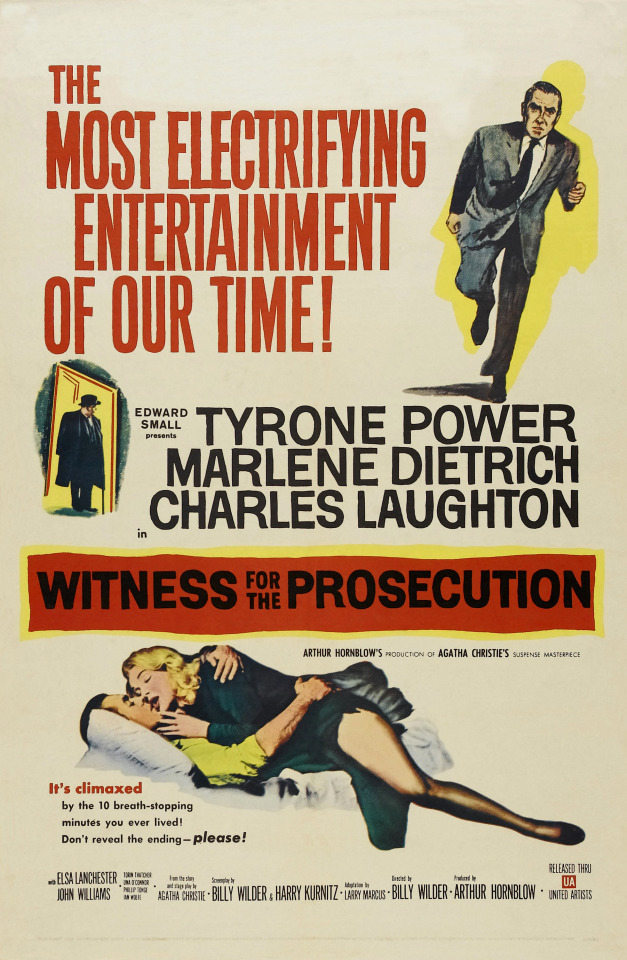
#witness for the prosecution#tyrone power#marlene dietrich#charles laughton#elsa lanchester#john williams#torin thatcher#una o'connor#philip tonge#ian wolfe#billy wilder#1957
8 notes
·
View notes
Text
Podcast 3732
0 notes
Text
youtube
The 7th Voyage Of Sinbad
Richard Eyer Kerwin Mathews Torin Thatcher Kathryn Grant Regisseur Nathan Juran Produzent Charles H. Schneer
0 notes